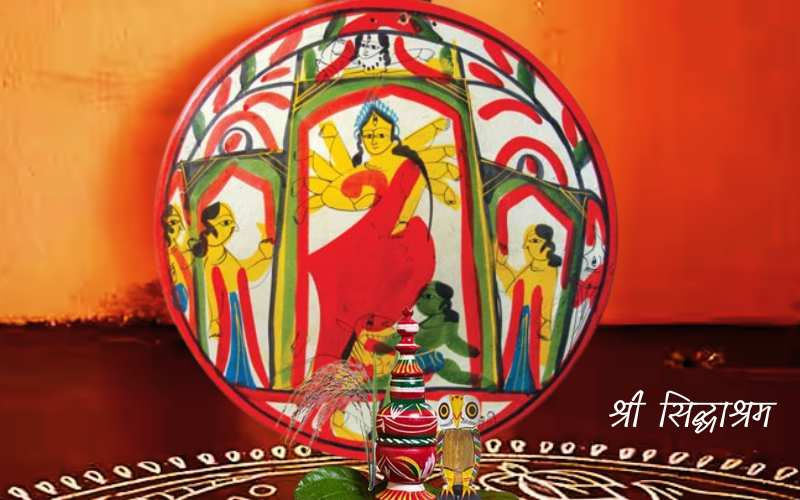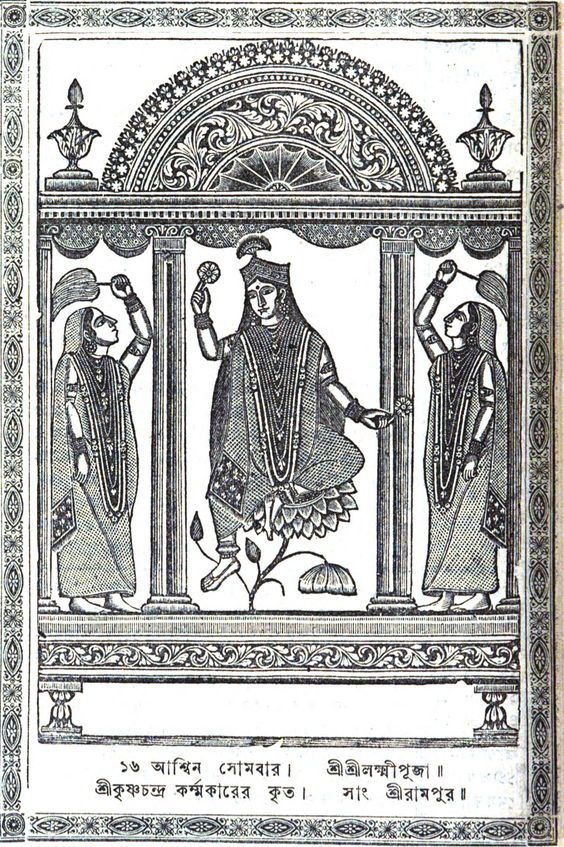Sadhguru explained the wrong interpretation of 'Kojagori'. Kojagori is not just a night of wakefulness; it is the awakening of the 'Ka' beeja in the Atman and to receive the divine vibrations of the cosmos. "In the silence of Kojagori night, the sacred seed of Kadi-Vidya awakens, unlocking the hidden energies of the universe within.

Article | October 16, 2024

Sadhguru: The term Kojagari holds profound spiritual significance in the context of Srividya Sadhana. While it is commonly associated with the popular belief that it is a night of divine vigilance, where devotees remain awake in devotion to Goddess Lakshmi, the true meaning of Kojagari goes far deeper. The word Kojagari is derived from the concept of Jagaran, meaning awakening or illumination. However, the esoteric practice of Srividya Sadhana specifically refers to the awakening of the sacred seed syllable ‘Ka.’
The syllable ‘Ka’ represents the primordial sound and energy of the universe, and its awakening is central to the practice of Kadi-Vidya, a mystical branch of Srividya Sadhana. Kadi-Vidya revolves around the activation of the 15-syllable mantra, which begins with the sound ‘Ka.’ This mantra is considered the key to unlocking the hidden energies of the Goddess, guiding the practitioner through the stages of spiritual evolution and leading them towards divine realization.
Kojagori is the night when the Goddess roams the earth, not seeking those who are merely awake, but those whose souls are illuminated by devotion.
The night of Kojagari, therefore, is not just a night of staying awake in devotion but a night of deep spiritual significance, where the practitioner engages in rituals designed to awaken the cosmic energies within themselves. The mantra chanting, meditations, and visualizations performed during this time are aimed at invoking the presence of the Goddess in her three distinct forms—Bala, Bhairavi, and Sundari—and merging with her divine essence.
The Forgotten Esoteric Rituals of Kojagari: A Tantric Awakening
In ancient Bengal, the night of Kojagari was not just about staying awake in devotion to Goddess Lakshmi. It was a night of Tantric rituals, deeply rooted in the practice of Srividya Sadhana. These rituals were designed to invoke the presence of the Divine Feminine, awaken the inner energies of the practitioner, and guide them towards spiritual enlightenment.
One of the key aspects of these rituals was the practice of Kadi-Vidya, which involved the chanting of the 15-syllable mantra, beginning with the sacred syllable ‘Ka.’ This mantra is said to hold the secrets of the cosmos within it, and its chanting serves as a key to unlocking the divine energies of the Goddess. The practitioner, through these rituals, would transcend the boundaries of the material world and enter into a state of non-duality, where they would experience the oneness of all existence.
True awakening on Kojagori comes not from sleepless eyes but from an awakened heart, resonating with the divine.
In modern times, this deep spiritual meaning has been largely forgotten, and Kojagari has become associated with the more superficial belief that it is a night where the Goddess Lakshmi roams the earth, bestowing blessings on those who are awake. While this belief has its roots in the ancient tradition, it does not capture the full depth of the original practice. The true significance of Kojagari lies in its role as a night of spiritual awakening, where the seeker engages in esoteric practices that lead them towards divine realization.

This image is the form of Mahavidya Kamala.
One of the most intriguing yet largely forgotten traditions of Bengal is that of Srividya Sadhana, a profound and deeply esoteric practice rooted in the ancient Nigam Tantra. This sacred tradition, celebrated with unparalleled devotion and intensity, once flourished in Bengal, especially during the autumn season, coinciding with Tripura Navratri and culminating in the Kojagari Lakshmi Puja. While the modern celebration of Navratri and Kojagari Lakshmi Puja has shifted towards more public and external expressions of devotion, the Srividya Sadhana tradition represented a far deeper journey—a spiritual immersion that sought to unite the practitioner with the supreme embodiment of the Divine Feminine, Tripura Sundari.
The mantra of Kadi-Vidya whispers the secrets of creation, and Kojagori is the moment when those secrets stir within the seeker's soul.
The practice of Srividya Sadhana, particularly in the Bengali Tantric tradition, was not a mere festival but a transformative sadhana—a path designed to lead the seeker into the deepest realms of consciousness. This observance, originally spanning nine days, was expanded by the influence of the Nigam Tantra and the Nath Tradition to a 15-day practice, offering practitioners an extended and immersive journey towards inner awakening and ultimate union with the Divine Mother. The sadhana unfolded from the beginning of Sharad, the autumn season, and culminated in Kojagari, a night of great esoteric significance.
Today, the deeper meanings and practices of Srividya Sadhana have largely faded from public consciousness, replaced by more exoteric forms of worship. Yet, within its forgotten layers lies a tradition that offers profound spiritual transformation—one that we must rediscover to appreciate its significance fully.
Kojagori teaches us that true prosperity lies not in material wealth, but in the awakening of the sacred divine energy within.
The 15-Day Sadhana of Tripura Sundari: A Journey to Inner Transformation
Central to Srividya Sadhana is the reverence and worship of Tripura Sundari, the supreme embodiment of the Divine Feminine, whose name signifies "the beauty of the three worlds." This deeply transformative practice engages the seeker in a 15-day sadhana, guiding them through three distinct manifestations of the Goddess, each symbolizing a different stage of spiritual growth.
Bala Tripura Sundari: The youthful and vibrant form of the Goddess, representing the seeker’s first steps on the spiritual path. Bala embodies purity, innocence, and the awakening of divine energy within. In this stage, the practitioner performs rituals aimed at purifying both body and mind, creating the foundation for deeper spiritual experiences to come.
Tripura Bhairavi: The fierce, transformative aspect of the Goddess, symbolizing the destructive force of the Divine Feminine that helps the seeker transcend internal obstacles. Bhairavi’s energy is raw and fearless, cutting through the illusions and attachments that tether the practitioner to the material world. At this stage, the sadhana emphasizes deepening resolve, empowering the seeker to confront their inner shadows and limitations.
Tripura Sundari: The ultimate expression of the Goddess, embodying divine wisdom, beauty, and unity. The culmination of the sadhana, this phase represents the attainment of spiritual enlightenment, where the seeker transcends duality and realizes the interconnectedness of all existence. The rituals here are focused on invoking the supreme presence of Tripura Sundari, leading the practitioner towards ultimate union with the Divine Mother.
This 15-day sadhana is not merely symbolic; it is an immersive internal journey of transformation. Each phase reflects a different aspect of the seeker's spiritual evolution, guiding them from the limitations of worldly ignorance to the boundless realization of the divine. The rituals practised throughout this period are meditative and designed to evoke the powerful presence of the Goddess, helping the practitioner merge fully with her sacred energy.
The night of Kojagori is a reminder that spiritual vigilance is not an act of the mind but an awakening of the heart to the Goddess’s grace.
The Influence of the Nigam Tantra and the Nath Tradition: Expanding the Practice
While the nine-day sadhana of Tripura Sundari forms the core of the Srividya practice, the influence of the Nigam Tantra and the Nath Tradition in Bengal expanded this ritual into a 15-day immersive experience. The Nigam Tantra, an ancient Tantric text, provided the philosophical and ritual framework for Srividya Sadhana, emphasizing the union of the individual soul with the universal consciousness embodied in the Divine Feminine.
The Nath Tradition, a lineage of yogic practitioners deeply rooted in Bengal, further enriched the practice by integrating their spiritual wisdom and techniques. Under their guidance, the additional six days of sadhana were introduced, allowing for an even deeper exploration of the Srividya path. The extended period of practice offered the seeker more time to internalize the teachings, purify the mind and body, and delve into the mysteries of the Divine Mother.
This 15-day sadhana, known as Srividya, became an immersive practice in Bengal, guiding practitioners through a transformative journey that went beyond the boundaries of ritualistic worship. It was a time for deep introspection, where the seeker would withdraw from the distractions of the world and engage in meditative practices designed to invoke the presence of the Goddess and bring about inner awakening.
Kojagori calls not for mere physical wakefulness but for the soul's deepest awakening to the infinite potential of the Divine Mother.
Reawakening the Forgotten Tradition of Srividya Sadhana
The ancient tradition of Srividya Sadhana in Bengal is a path of profound spiritual transformation, one that has largely been forgotten in the modern world. Yet, within its rituals and practices lie the keys to awakening the Divine Feminine within ourselves, transcending the material world, and realizing the oneness of all existence.
As we reflect on the forgotten significance of Sri Vidya and Kojagari Lakshmi Puja, it becomes clear that this tradition offers far more than just external worship. It is a deeply meditative and transformative practice, designed to guide the seeker on a journey of spiritual evolution. By reawakening this lost tradition, we can rediscover the profound wisdom and power of the Divine Feminine, and through her, achieve the highest state of spiritual realization.



Comments